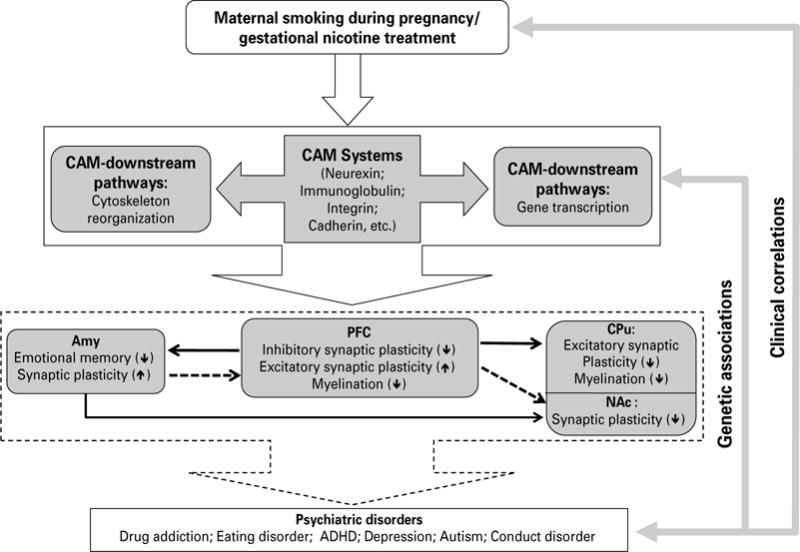Fig. 4.

A proposed neuronal mechanism underlying the neurobehavioural effects of maternal smoking during pregnancy on the adolescent offspring via cell adhesion systems. Animal model of gestational nicotine treatment (GN), which mimics human maternal smoking during pregnancy, showed significant alterations of cell adhesion molecules (CAMs), and CAM downstream signalling pathways, including cytoskeleton reorganization-related and transcription-related pathways. The effects of GN were heterogeneous among the limbic brain regions examined. Given that CAM systems play important roles in synaptic plasticity and myelination, the potential effects of altered CAM systems on the prefrontal cortex (PFC), amygdala (Amy), caudate putamen (CPu), and nucleus accumbens (NAc) were hypothesized. The dotted lines between each brain region indicate connections actively maturing in adolescence and solid lines are connections thought to be mature by adolescence. Up- or down-regulation on each neuronal process is shown by ↑ or ↓, respectively. Given the obvious neurobehavioural consequences of maternal smoking, and strong genetic associations between CAM-related genes and neuropsychiatric disorders, the alterations of CAM systems by GN in the limbic brain regions suggest a new mechanism underling MS-linked neurobehavioural deficits.
